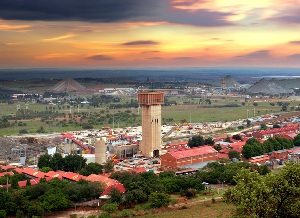
ANGLOGOLD Ashanti is heading for a heavy half-year headline earnings loss of $93m or R1.2bn as it absorbs the cost of a restructuring of its South African assets that may result in the loss of 8,500 jobs.
The company said in a trading statement today that it would impair its South African mines for $86m which equates to 21 cents per share. In addition retrenchment costs were forecast to total $47m or 11 cents per share.
AngloGold said on June 28 that it would initiate a Section 189 restructuring process at its Tau Tona and Kopanang mines potentially affecting 8,500 miners following a period of losses it described as “unsustainable”. The company employs some 28,000 people, including contractors, at its South African mines.
As with Gold Fields and Anglo American last week, AngloGold had also provided for a payment to miners who had contracted silicosis. AngloGold set aside $46m or R611m which compares to R400m and R1.3bn set aside by Gold Fields and Anglo American respectively.
The estimated basic loss for the six months ended June 30 is forecast to be between $167m to $185m (a maximum of R2.5bn which is about 4.5% of the firm’s market value). Shares in AngloGold were down 1.4% shortly after it issued the trading statement to the Johannesburg Stock Exchange.
AngloGold also said that its earnings were negatively affected by the strength of local currencies in South Africa and Brazil where it also operates. Inflation, changes in inventories and lower income from associates and joint ventures also weighed on the bottom line.
Despite the fact that some of AngloGold’s South African mines are loss-making, volumes remained good. Gold production was expected to be unchanged year on year at 1.75 million oz while second quarter production of 918,000 oz was 10.6% higher quarter-on-quarter.
JP Morgan Cazenove looked on the bright side observing that excluding the impairments, AngloGold would have posted a profit of $44m which was in line with expectations pre-exceptional items. It added that the provision for silicosis was “… a materially lower potential liability than many market observers had feared”.
TANZANIA
AngloGold is due to report its second quarter and half year figures on August 21 where questions are bound to be posed regarding the pace and impact to future earnings of the restructuring at the South African mines. Queries regarding the strategic direction of AngloGold’s South African focus may also be asked.
The market will also be interested in the firm’s take on events in Tanzania where it operates the Geita mine. This is following legislative changes to the East African country’s mining code, including an increase in the country’s revenue royalty to 6% from 4% on mining firms which AngloGold is now paying.
Moody’s analyst, Douglas Rowlings, said in July that AngloGold would seek direct negotiation with the Tanzanian government, but would assess whether it was worthwhile deploying more capital in the country. “For the time being, the Geita mine remains profitable, with an all-in sustaining cost of production of $844 per ounce for 2016 and cash from sales continuing with no effect on gold production,” said Rowlings.
“We expect the uncertain operating environment in Tanzania to prompt AGA [AngloGold] to redeploy capital expenditures earmarked for Geita, notably the development of an underground mine.
“This will allow AngloGold to shift capital toward fast-tracking low-capital-high-return brownfield opportunities at its other mines to counter any negative effects on Geita’s contribution to overall EBITDA,” he added.
At production of 489,000 ounces of gold last year, Geita was comfortably the group’s single largest mine contributing nearly 40% of continental Africa’s 1.3 million oz. Gold production from continental Africa (excluding South Africa) is equal to 36% of total AngloGold output.








